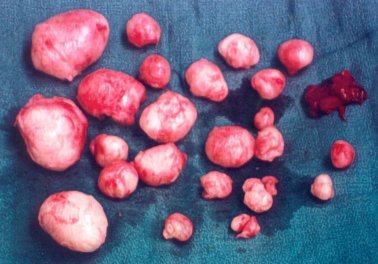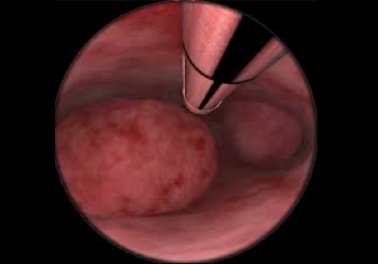Kale
The next super food on the list is Kale. This green vegetable is one of the healthiest vegetables around. Move over spinach-kale overtakes you on nutrition and health benefits!
One cup of kale has only about 36 calories and provides about 20% of the RDA for fiber. As we have learned, fiber helps promote regular digestion, helps prevent constipation, helps lower blood sugar and keeps us feeling sated longer helping to prevent over eating. When steamed, the fiber in kale helps bind with the bile acids that are produced after eating fat making it easier for those bile acids to be eliminated thus lowering your cholesterol levels.
Kale provides a high amount of the antioxidants, carotenoids and flavonoids that help protect our cells from oxidative stress. The particular flavonoids present in kale help fight against some cancers including colon, breast, bladder, prostate, ovarian and stomach cancers. The glocosinolate isothiocyanate that is present in kale actually helps fight the formation of a bacteria called Heliocobacter pylori which is a can be found in the stomach and is linked to stomach ulcers and some stomach cancers.
One cup of kale provides about 10% of the RDA for omega-3 fatty acids. Omega-3 fatty acids are commonly found in vegetables and help reduce inflammation and other inflammatory conditions such as arthritis, autoimmune disorders and asthma.
Vitamin K is found in high levels in Kale. Vitamin K is necessary for the formation of osteocalcin which is a protein that helps strengthen our bones. Vitamin K also helps prevent the build-up of calcium in our tissues that can lead to atherosclerosis, cardiovascular disease and stroke. Vitamin K is also a must for the formation of sphingolipid with is a fat that helps keep our nerves healthy. Vitamin A is plentifully found which helps boost immunity, helps keep our bonds and teeth healthy, and helps prevent urinary stones. Vitamin C is also found in high levels. Vitamin C I not only an antioxidant but helps lower blood pressure, helps maintain a healthy immune system, fight against some of the eye diseases associated with aging.
So what exactly does one do with this leafy green vegetable? Kale can be bitter to the taste. Purchase Kale with smaller leaves for a milder flavor. The health benefits of Kale increase with steaming for about 5 minutes.
Ways to enjoy Kale:
- I like to add some chopped Kale to my omelet in the morning along with a little shredded parmesan cheese
- Try braising some Kale with apples then sprinkle with some balsamic vinegar and add some chopped walnuts
- I like to sauté a little fresh minced garlic, add some chopped Kale, then toss with a little olive oil before serving
- Add some chopped Kale, pine nuts and feta cheese to some whole grain pasta and drizzle a little olive oil
Kale chips are very easy to make and so much healthier than potato chips. The flavor options are endless!
Basic Kale Chips
1 bunch Kale, middle spines removed, torn into smaller pieces
Olive oil
Salt
Preheat oven to 350 degrees F. Thoroughly dry the Kale leaves. This is very important. Place olive oil and salt into sealable plastic bag. Shake to coat, remove air from bag, reseal and rub olive oil and seasonings into leaves. Place leaves in a single layer on a cooking sheet covered with parchment paper or lightly coated with cooking spray. Bake in the oven for 20-30 minutes until crisp and lightly brown.
Flavor Options
- Add about 1 teaspoon chili flakes to bag and mix. Sprinkle some Cheyenne pepper and or paprika on top of cooked leaves after removing from oven.
- Add 2 tablespoons of soy sauce and 1 ½ teaspoons of sesame seeds to the bag.
- Try ¼ cup sherry vinegar and salt.
- Combine 2 teaspoons of French onion dip or soup mix to bag.
- Try 3 cloves garlic minced and garlic salt.
- Sprinkle kale with 2 tablespoons Parmesan or Asiago cheese before placing in the oven.
- What about 3 table spoons Balsamic vinegar, 1 tablespoon Dijon mustard, juice of 1 lemon and some pepper.
- Add the juice of 1 lime, 1 teaspoon lime zest or grated lime peel and 2 teaspoons chili powder.
I got this recipe from my sister, who is the pickiest eater on earth. She loves this salad and it only takes minutes to make!
Kale Salad
Baby Kale
6 ounces Brussel Sprouts cut into quarters
½ head red cabbage
¾ cup dried cranberries
Dressing
¼ cup lemon juice
Salt and pepper to taste
Dash olive oil
Shaved Parmesan cheese
Combine the lemon juice, salt, pepper, olive oil and Parmesan in a bowl. Combine the prepared vegetables. Pour dressing over the vegetables and mix.

 These are very common non-cancerous tissue growths in the uterus. The size and number of these fibroids is variable… can be a single fibroid or multiple fibroids, and can range from very small to the size of a cantaloupe. They can be found on a stalk inside or outside the uterus. They can also be found in any layer of the uterus: in the muscle wall (intramural), under the outer layer (subserosal), or just below the inner lining of the uterus (submucosal).
These are very common non-cancerous tissue growths in the uterus. The size and number of these fibroids is variable… can be a single fibroid or multiple fibroids, and can range from very small to the size of a cantaloupe. They can be found on a stalk inside or outside the uterus. They can also be found in any layer of the uterus: in the muscle wall (intramural), under the outer layer (subserosal), or just below the inner lining of the uterus (submucosal). These are small protrusions of the uterine lining (endometrium) that grow, become fragile, and start to bleed. Here is a picture of two polyps and the Symphion device.
These are small protrusions of the uterine lining (endometrium) that grow, become fragile, and start to bleed. Here is a picture of two polyps and the Symphion device.